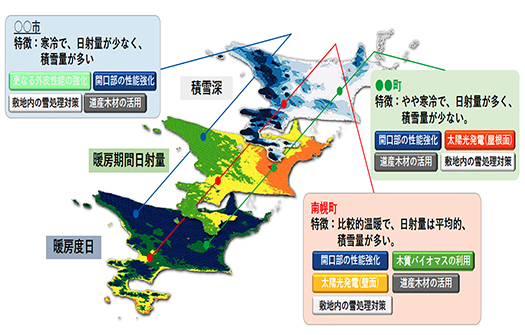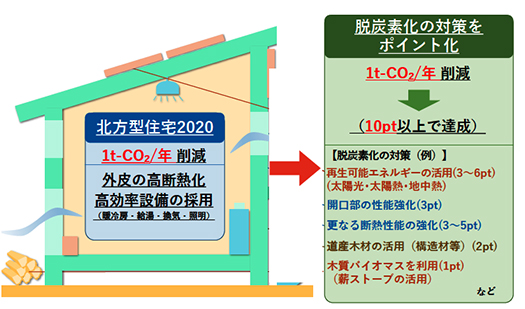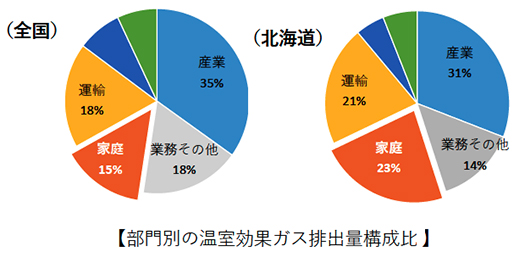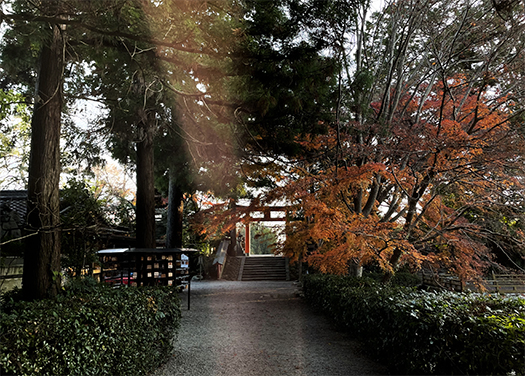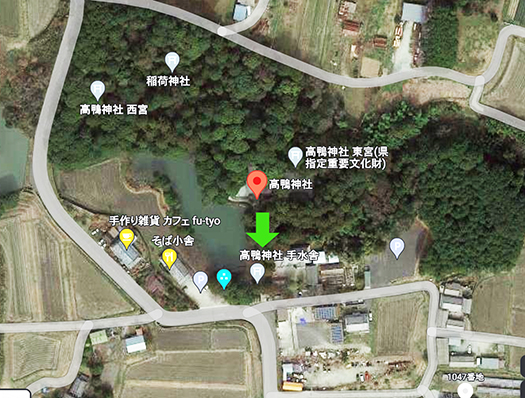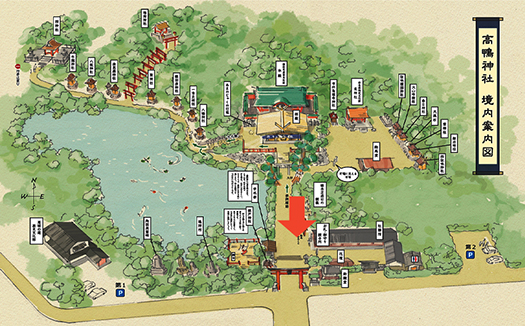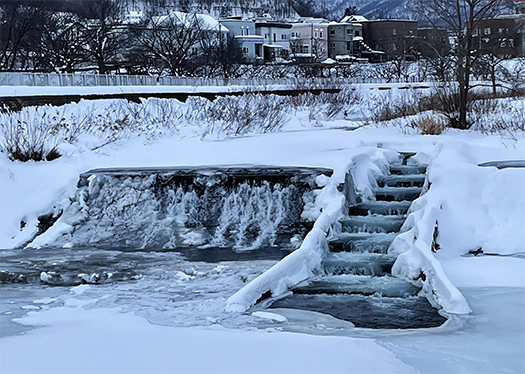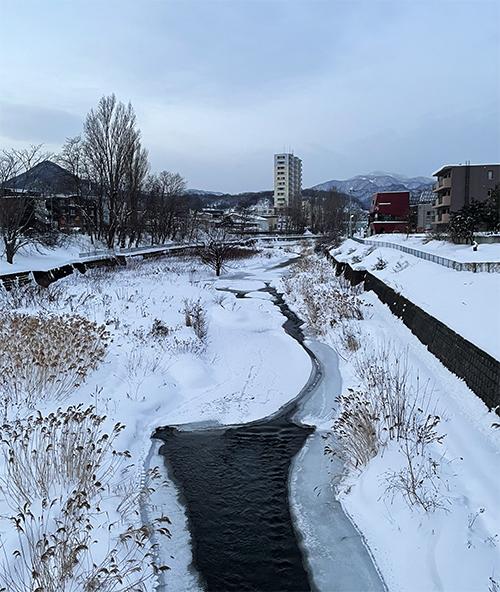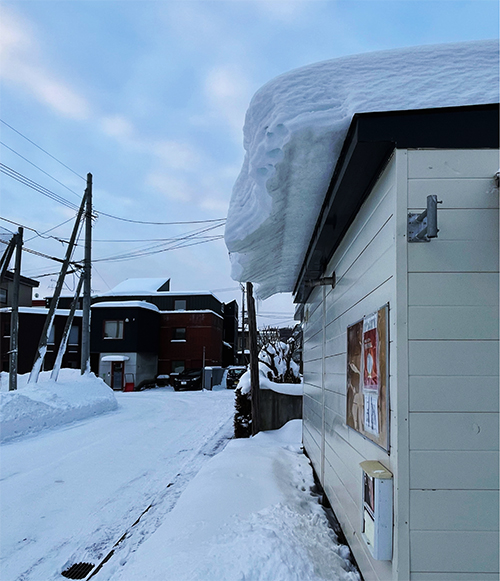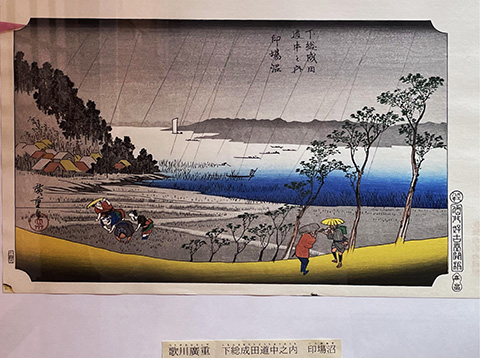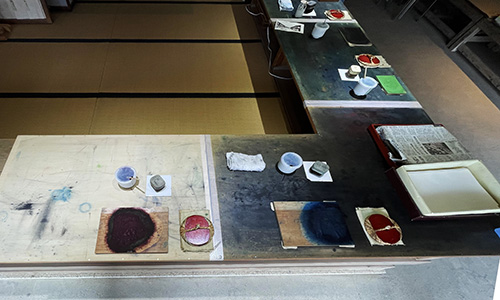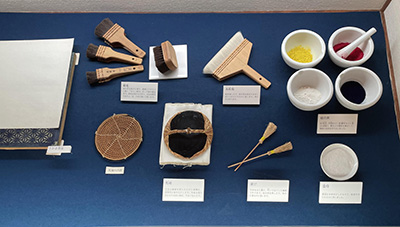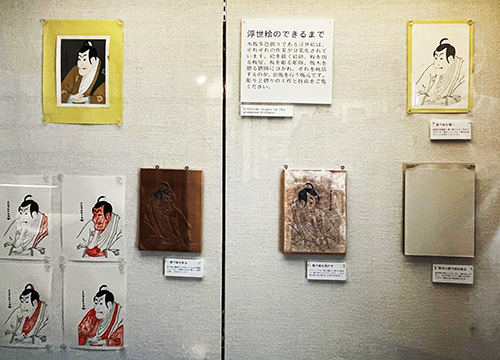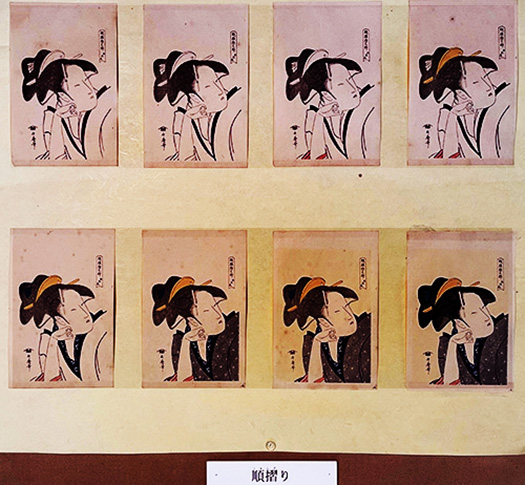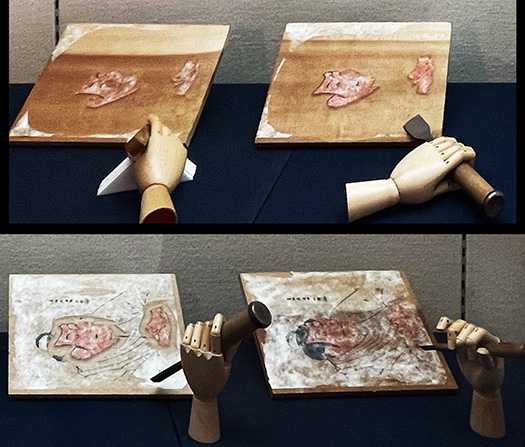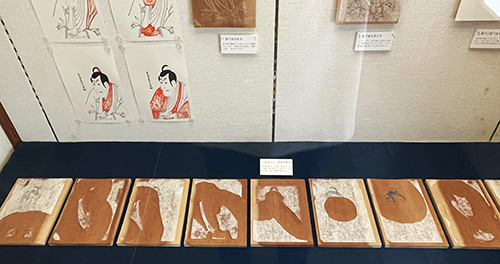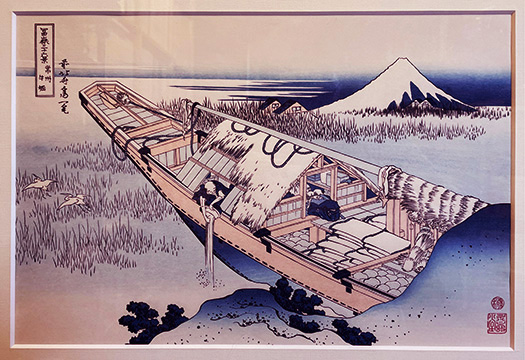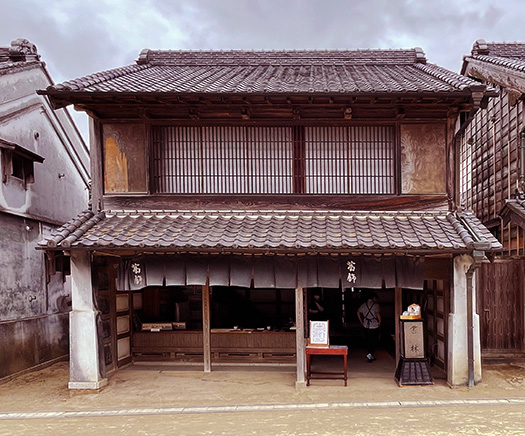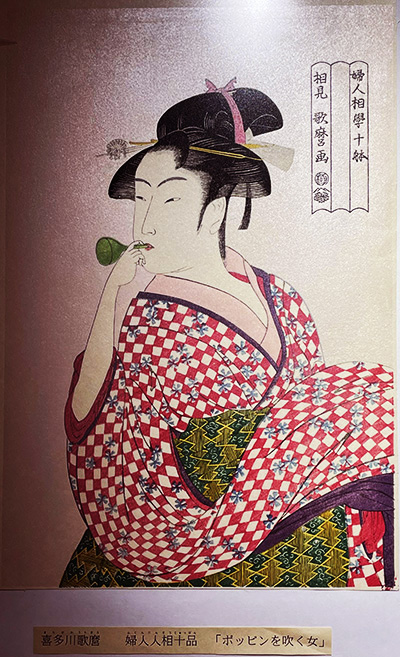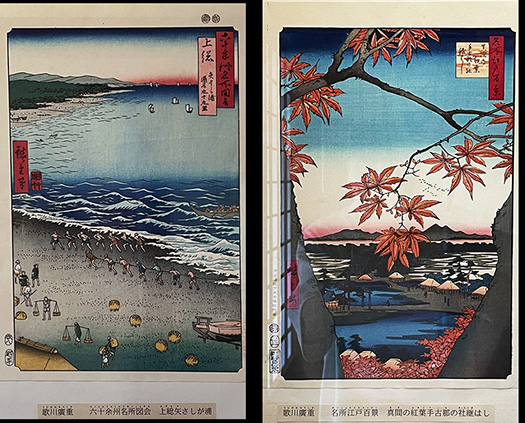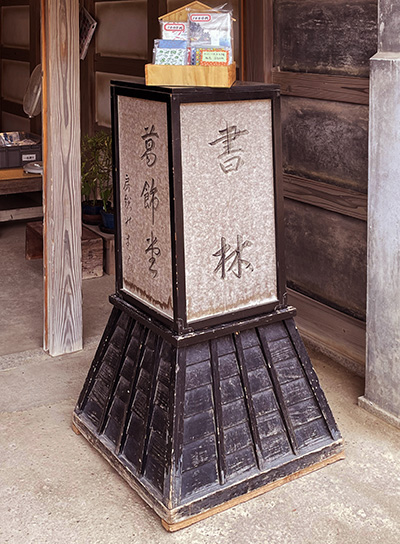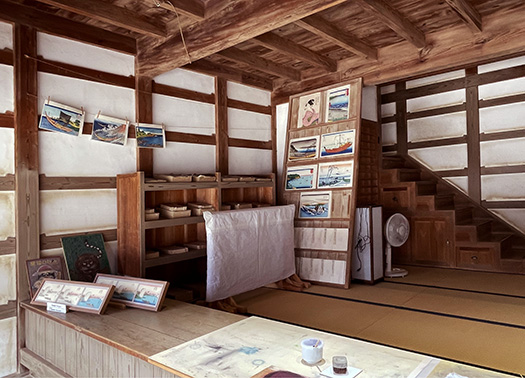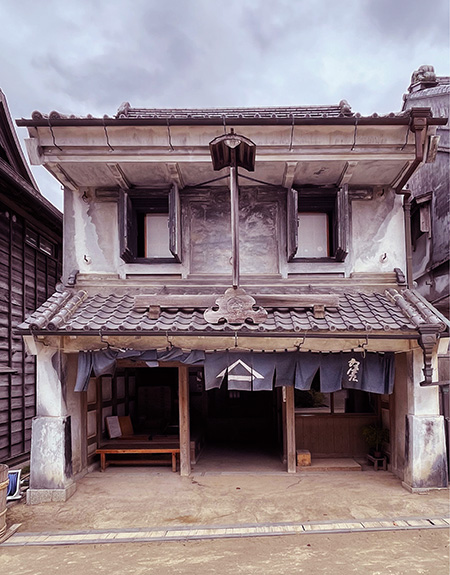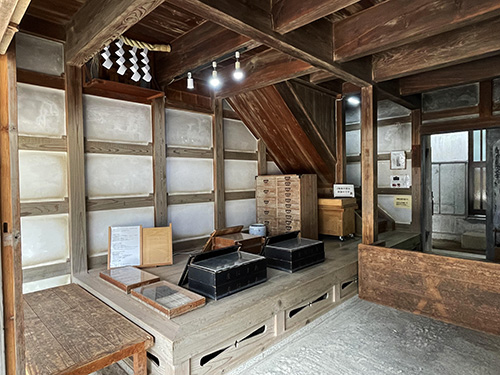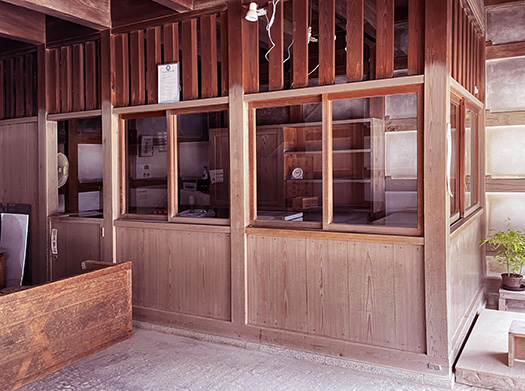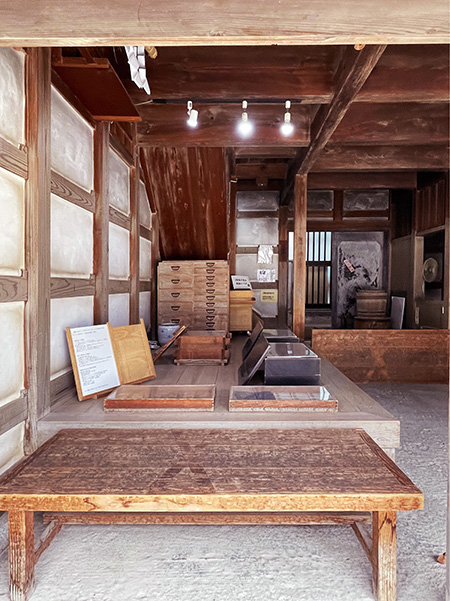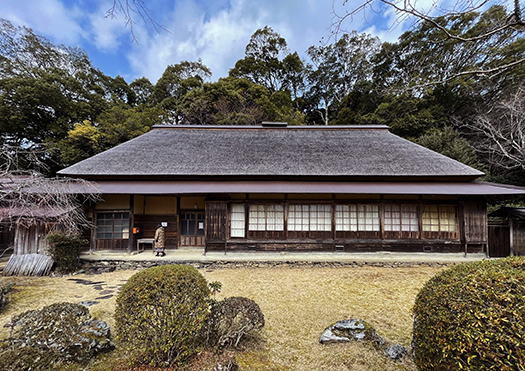
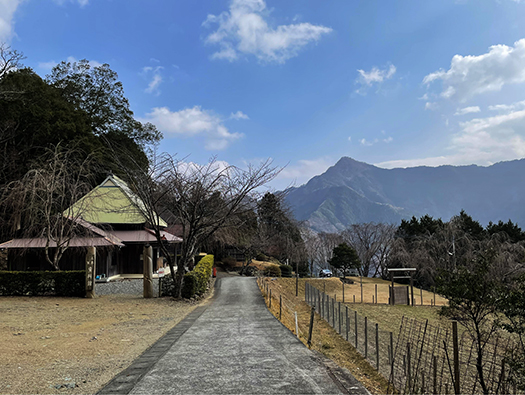
全国に「三木家住宅」という名のついた古民家で「重要文化財」指定されているものが数軒ある。わたしが知る限り全部で4軒。わたしの姓は三木なので類縁として、また古民家理解に関してもよりリアリティが感じられると思っている。これまでに兵庫県内の2軒については訪問しており、ことしの年始休暇で徳島県美馬市の三木家住宅をはじめて参観してきた。兵庫県の2軒については家系伝承的にもつながりがありそうなので数次訪問しているけれど、こちら徳島はたぶんつながりは乏しいと思っている。忌部氏の末裔ということで、古代からの氏族として朝廷との関わりも深く、今次の令和の大嘗祭において古式に則って、天皇の即位に際しての服・麁服(あらたえ)という麻布の式服素材を「調進」したという家柄。
札幌からなので関空に到着後、淡路で1泊して翌日に徳島県美馬市の「三木山」をめざした。もよりの高速IC「脇町」から約31kmということで、北海道人の道路感覚としては30-40分程度かなぁ、国道だと言うし、という程度の距離認識で向かった。
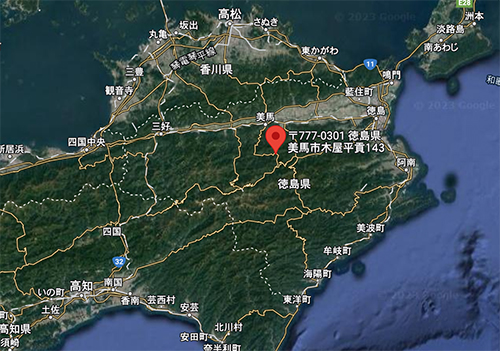
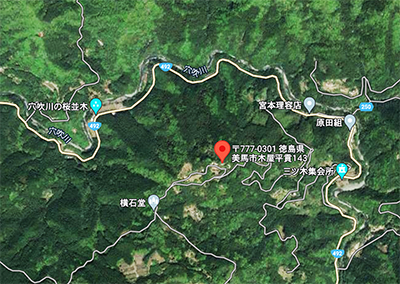
ところが(笑)、国道(492号)ではあるけれど途中からの山道はほぼ1車線道路で曲がりくねった難路〜酷道・・・。対向車がくればアウトという道を延々と走ることになった。カミさんとふたり「お願いだから対向車が来ませんように」と祈りながらひたすら艱難辛苦。地元のドライバーとおぼしきクルマに追い越してもらってそれについて行ったけれど慣れた人は対向車の危険はほぼ無視するかのようにスピードを上げるので追走は早々と諦めた。あとで帰り道を下ったら、下り側の注意標識で相互に交叉させないような交通案内になっていた。けれどはじめて走る人間にはそういう事情はわからず、ひたすら安全最優先。なんといっても一歩ハンドルを誤れば、路肩から転落する危険性すら高いのだ。
最後の集落から外れて本格的な山道を上がった頂上付近に、この三木家住宅は端座していた。ようやくにしてたどりついたのだけれど、内部は公開されていなくてカギが掛かっていた(泣)。比較的に有名な古民家であり重要文化財ということで平日には公開されているものとばかり思い込んでいた。本宅と「資料館」どちらも内部には入れなかった。そういう点では事前の調査不足を突き付けられた。しかし、周辺の環境など来るまでの苦労が融けていくような素晴らしさで迎えていただけた。神々しいばかりの眺望。
そしてなんといっても天皇の即位儀礼を飾る麻布を謹製する家系という威厳というか、独特の空気感が山上の空間に満ちていた。内部空間を見ることができなかったのは残念だけれど、しかし家というのは内部空間だけではなく、周辺の環境全体が「たたずまい」を構成すると無言で語りかけてくれた。数回に分けてこの三木家住宅をご紹介したい。
English version⬇
The Miki Family Residence in Tokushima, where the “ARATAE” ritual is held on the day of the first ceremonial offering of rice to the goddess of grain.
After a fearful climb up the narrow one-lane “national road” in the Shikoku Valley, you finally visit an ancient private house on top of a mountain. The surrounding environment is relaxing. The Miki Family Residence
There are several old private houses with the name “Miki Family Residence” that have been designated as “Important Cultural Properties” throughout Japan. As far as I know, there are four in total. My family name is Miki, so I feel that I am related to the Miki family and that this gives me a greater sense of reality in terms of understanding old private homes. I have visited two of them in Hyogo Prefecture, and during my New Year’s vacation this year, I visited the Miki family residence in Mima City, Tokushima Prefecture, for the first time. I have visited the two houses in Hyogo Prefecture several times because they seem to be connected in terms of family lore, but I think the connection is probably weak in Tokushima Prefecture. The family is descended from the Imobe clan, a clan that has had a deep connection with the Imperial Court since ancient times, and in accordance with the ancient ceremony of the Great Tamesai Ceremony of 2025, the family “prepared” the emperor’s ceremonial clothes called “aratae” for his accession to the throne.
After arriving at the Kansai International Airport from Sapporo, I stayed overnight in Awaji and set off the next day for “Mt. The distance from Wakimachi, the highway IC from which I was heading, was about 31 km, so I thought it would take about 30-40 minutes from the perspective of Hokkaido people.
However, although it is a national highway (Route 492), the mountain road from the halfway point was almost a one-lane road with twists and turns, a difficult road, and a terrible road…. We had to drive on the road for a long time, and if an oncoming car came along, we would be out of luck. My wife and I prayed that no oncoming cars would come along the road. We asked a car that looked like a local driver to pass us and we followed him, but we gave up on the chase early on because people who are used to driving on the road speed up as if they almost ignore the danger of oncoming cars. When I went down the road later on my way home, I found a warning sign on the downhill side of the road to guide traffic not to cross each other. However, first-time drivers do not understand such circumstances, and safety was our top priority. After all, if you swerve the wrong way, there is a high risk of falling off the shoulder.
The Miki family’s house was located near the top of a mountain road that led out of the last village. We finally arrived at the house, but the inside was locked and not open to the public. I had assumed that the house was open to the public on weekdays, as it is a relatively famous old house and an important cultural property. We were not allowed to go inside either the main house or the “museum. In that respect, we were confronted with a lack of prior research. However, we were welcomed by the surrounding environment and other splendors that seemed to melt away the hardships we had gone through before coming. The view was divine.
And, above all, the space on top of the mountain was filled with the dignified and unique atmosphere of a family that has produced linen for the emperor’s coronation ceremonies. It was a pity that we could not see the interior space, but the house silently told us that not only the interior space but also the entire surrounding environment constitutes the “appearance” of the house. I would like to introduce the Miki family residence in several articles.
Posted on 1月 25th, 2023 by 三木 奎吾
Filed under: 古民家シリーズ, 日本社会・文化研究 | 1 Comment »


